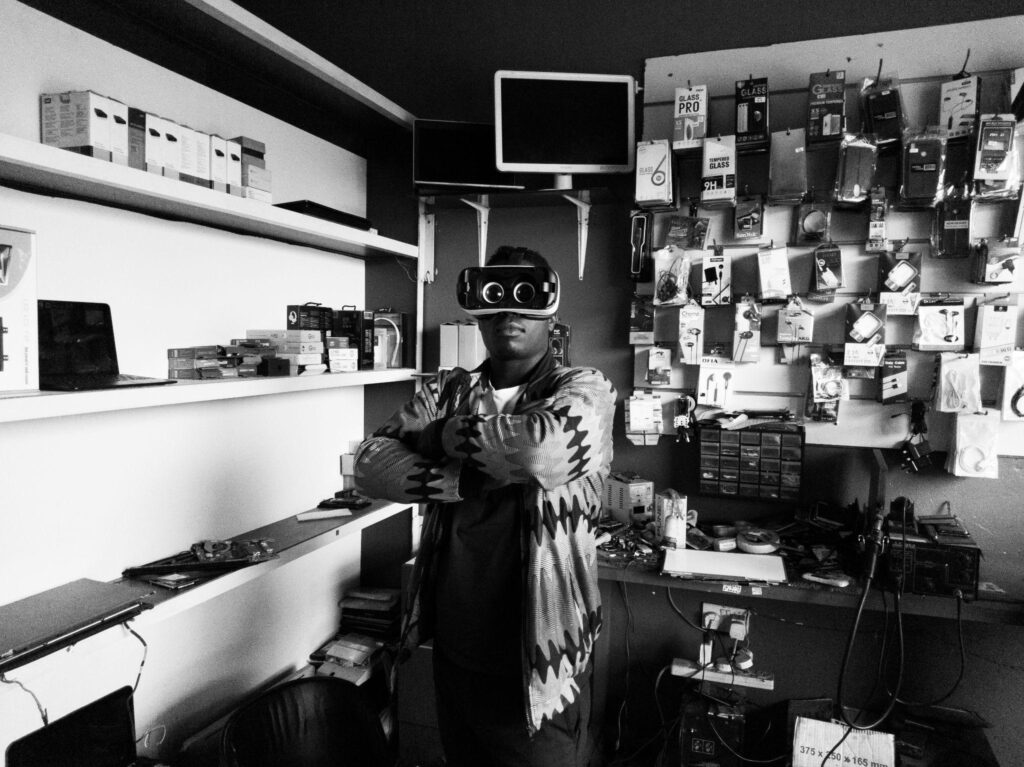https://www.pexels.com/photo/black-man-in-vr-goggles-in-electronics-store-5335349/
Virtual Reality (VR) and Augmented Reality (AR) are transforming how consumers to shop and engage with brands online. These cutting-edge technologies are bridging the gap between the digital and physical worlds, providing exceptional and interactive shopping experiences previously unattainable. As businesses strive to stand out in an increasingly competitive market, incorporating VR and AR technologies into your online store and marketing approach is essential.
This post will discuss the best ways to blend VR and AR into your e-commerce platform and delve into their potential effects on shopping and marketing in the future.
Immersive 3D Showcases
One of the most thrilling applications of VR technology in e-commerce is the development of immersive 3D showcases. These interactive environments enable customers to explore your products in a 3D space, offering a more lifelike and engaging shopping experience.
By adding immersive 3D showcases to your online store, you can display your beauty and fashion products, or tech and gadgets, in novel ways and help customers make better-informed purchasing choices.
AR-Enabled Product Visualization
Augmented Reality allows customers to visualize products in their actual environments, connecting online and offline shopping experiences.
By incorporating AR features into your e-commerce platform, you empower customers to see how items such as furniture, apparel, or accessories would appear in their homes or on their bodies. This can decrease return rates and boost customer confidence in their purchases.
Virtual Trial Rooms
Virtual trial rooms utilize VR or AR technology to allow customers to “try on” clothing and accessories without physically handling the items. This not only provides a convenient and interactive shopping experience but also has the potential to reduce return rates and enhance customer satisfaction.
By integrating virtual trial rooms into your online store, you can offer customers a more customized and immersive shopping experience.
Engaging Product Demonstrations
VR and AR technologies can be employed to create engaging product demonstrations, enabling customers to explore and interact with your products in new and captivating ways. These demos can exhibit product features, functionality, and benefits, helping customers grasp the value of your products and increasing the likelihood of a purchase.
Advertising And Marketing through AR
Augmented Reality can be leveraged in advertising and marketing campaigns to create interactive and engaging content. By incorporating AR elements into your marketing materials, such as product packaging or print ads, you can motivate customers to engage with your brand and drive traffic to your online store.
360-Degree Store Experiences
360-degree store experiences use VR technology to provide customers with an immersive view of your physical store or showroom.
By integrating 360-degree store experiences into your online store, you can showcase your physical retail space and offer customers a more comprehensive shopping experience, connecting online and offline retail.
Interactive Gaming And Experiences
VR and AR technologies can be utilized to create interactive gaming and shopping experiences, encouraging customers to engage with your brand and products.
By incorporating elements of gaming into your online store, such as challenges, rewards, or leaderboards, you can boost customer engagement and brand loyalty.
Improved Customer Assistance
Merging VR and AR technologies into your customer assistance strategy can enhance the overall shopping experience. For instance, virtual assistants or chatbots can use AR to guide customers through troubleshooting procedures or product assembly.
This can streamline customer assistance interactions and increase customer satisfaction.
Instruction And Learning
VR and AR technologies can be employed to instruct and educate customers about your products, services, or industry. By including immersive training experiences and educational content in your online store, you can help customers make more informed purchasing decisions and build trust in your brand.
The Evolution Of Engaging Shopping And Advertising
As VR and AR technologies continue to progress, we can anticipate even more inventive and immersive shopping and marketing experiences to emerge. These technologies will further blend the boundaries between online and offline retail, allowing customers to move effortlessly between the two realms.
Conclusion
Incorporating VR and AR technologies into your online store and marketing strategy is crucial for maintaining a competitive edge in today’s rapidly evolving e-commerce landscape. Immersive 3D showcases, AR-enabled product visualization, virtual trial rooms, engaging product demonstrations, advertising and marketing through AR, 360-degree store experiences, interactive gaming and experiences, improved customer assistance, and instruction and learning are just some of the ways you can harness the power of VR and AR to create unique and engaging shopping experiences for your customers.

